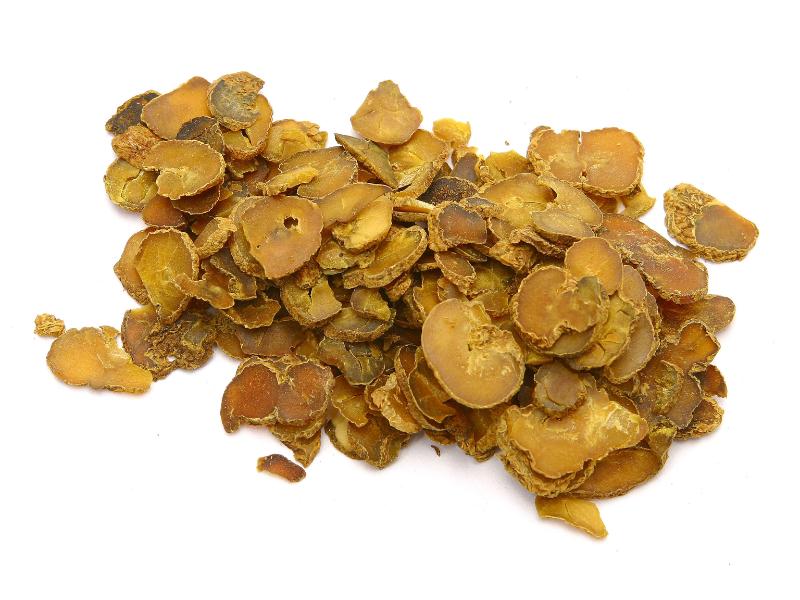Search in medicinals
Corydalis Rhizoma
Corydalis [rhizome]
延胡索 〔延胡索〕 yán hú suǒ

Alternate English names: yanhusuo [root]
Alternate Chinese names: 延胡 yán hú; 元胡索 yuán hú suǒ; 元胡 yuán hú; 玄胡索 xuán hú xuǒ; 玄胡 xuán hú
Kingdom: Plant
Origin in PRC Pharmacopoeia: Corydalis yanhusuo W.T. Wang. (PRC Pharmacopoeia)
Origin in unofficial sources: Corydalis yanhusuo W.T. Wang*; Coydalis ambigua Cham. et Schlecht.; Coydalis ambigua Cham. et Schlecht. var. amurensis Maxim.; Corydalis hamosa Migo
Use: Medicinal
Category: Blood-quickening stasis-transforming agents / Blood-quickening pain-relieving agents
Properties: Acrid, bitter; warm.
Channel entry: Liver, heart, and spleen channels.
Actions and indications: Quickens the blood, moves qì, and relieves pain: Pain due to qì stagnation and blood stasis.
Dosage and method: Oral: 3–10g in decoctions; when swallowed as a powder, each dose should be 1–3g. The pain-relieving effect may be strengthened by stir-frying it with vinegar. This increases the solubility of the active analgesic constituents.
Warnings: Contraindicated in pregnancy.
Product description: This tuber is spheroid or ovate, sometimes single, sometimes attached to another. It is about 1.5–2.5 cm in diameter and a yellowish brown in color. On one side, it has a depression where the base of the stalk was removed, and on the other, numerous tuberous protuberances. It is hard and breaks to reveal a smooth, granular fracture that is a greenish yellow in color. It is cut into thin transverse slices, which are then stir-fried until they turn dark brown, or mix-fried with vinegar or wine until light brown.
Quality: Firm large plump tubers that have finely wrinkled wax-yellow skin, and golden yellow interiors are the best.
Production area: Zhèjiāng, Tianjin, Hēilóngjiāng.
Back to search result Previous Next